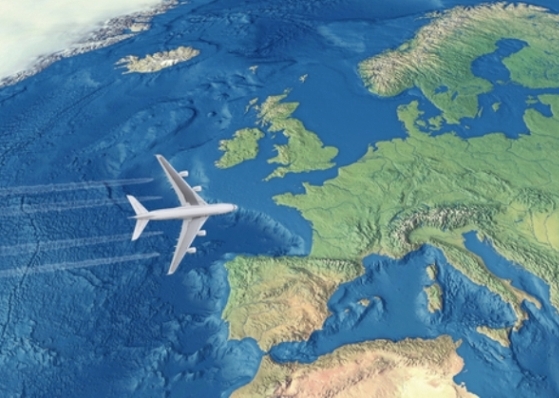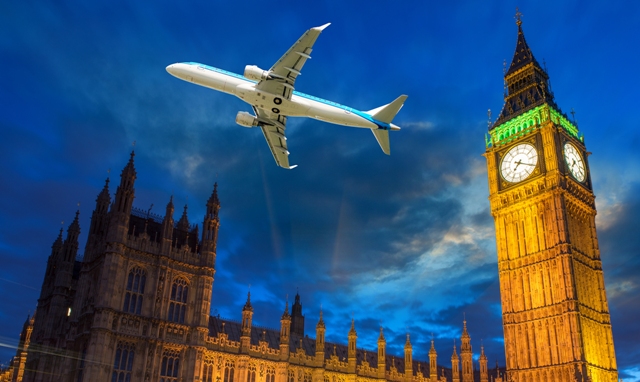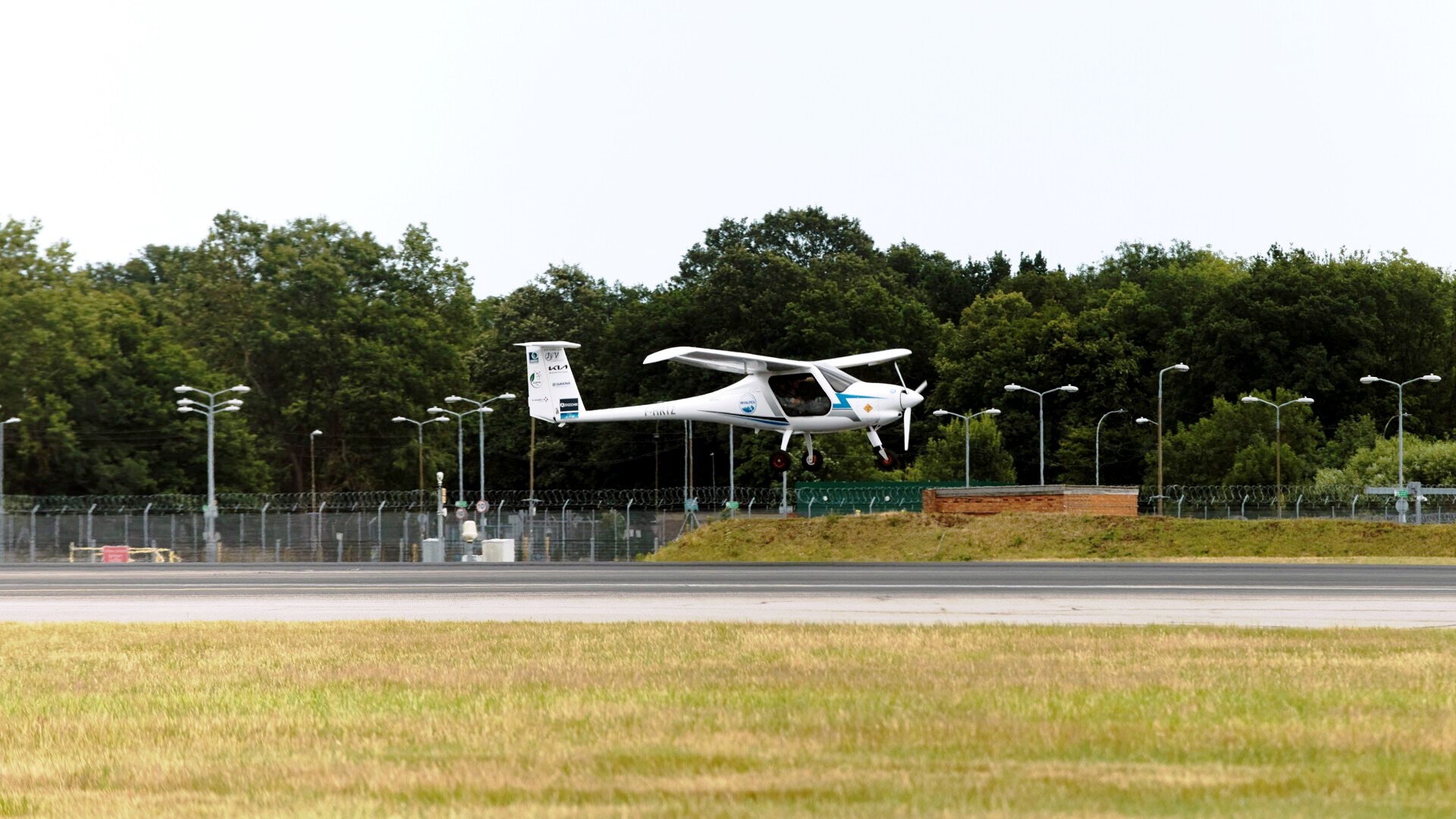European airports see +98% jump in passenger traffic in 2022

Image copyright Shutterstock
However, that was still -21% below pre-pandemic (2019) volumes, with just 27% of Europe’s airports having fully recovered their 2019 passenger traffic level.
Olivier Jankovec, Director General of ACI EUROPE said: “The surge in passenger traffic last year has been phenomenal. Kicking off in early Spring when most travel restrictions were finally lifted, it boomed over the Summer and remained resilient afterwards. All of this despite geopolitical shocks, deteriorating macro-economics, fast-rising air fares and COVID still being with us. If anything, 2022 has been the year in which we finally learned how to live and travel with COVID-19.”
Jankovec however put this in perspective: “This is not yet a full recovery. Europe’s airports were still short 500 million passengers in 2022 compared to where they stood before the pandemic hit. And there were significant gaps in traffic performance between hubs and smaller regional airports as well as across national markets”.
Looking ahead, he was cautiously optimistic: “There is still a lot of uncertainty about 2023, not least because of geopolitical tensions and the fact there is no end in sight for the war in Ukraine. But the traffic outlook is getting better thanks to demand headwinds easing somewhat with the reopening of China, recession fears for Europe subsiding and inflation softening. This should help in reducing the current traffic gaps and getting more airports closer to their pre-pandemic volumes.
"However, supply pressures are likely to remain significant given the structural capacity reductions made by most airlines during the pandemic, their strong focus on increasing yields through higher air fares rather than market share, aircraft delivery delays and labour shortages still being an issue in some markets.”
EU and market rebound in 2022
Airports in the EU+ market1
saw their passenger traffic increasing by +122% in 2022 compared to the previous year. Such record year-on-year growth attests to the tremendous value for people of being able to reconnect and travel across Europe and beyond. The rebound was especially impressive for airports in countries were travel restrictions had been most stringent throughout 2021, such as the UK (+249%), Ireland (+235%) and Finland (+187%).
Meanwhile, the increase in passenger traffic at airports in the rest of Europe2
was relatively moderate at +26%. This was due to the lesser impact of the pandemic on air traffic in 2021 as governments in these countries generally refrained from imposing the kind of travel restrictions affecting the EU+ market. This was also due to the impact of the war in Ukraine, with Ukrainian airports (-88.3%) losing all commercial air traffic as of February 2022 and Russian airports (-10.4%) losing air traffic to/from the EU+ market in particular.
Multispeed recovery across national markets
When compared to pre-pandemic (2019) volumes, 2022 saw the gap in passenger traffic between the EU+ market and the rest of Europe closing, with both markets standing at -21%3
.
Still, there were huge variations in the performance of national markets across Europe in terms of their recovery to pre-pandemic (2019) level. These variations reflect a mix of factors – including the continued predominance of leisure/VFR demand boosting airports in tourist-oriented countries, targeted Low Cost Carriers’ (LCCs) expansion, increased airport competition as well as the impact of past travel restrictions lingering and the war in Ukraine.
In the EU+ bloc, airports in Greece (-1.9%), Portugal (-5.8%) and Luxembourg (-6.9%) came closest to a full recovery in passenger traffic.
Amongst larger EU+ markets, airports in Spain (-11.4%) posted the best results, followed by those in Italy (-17.9%) and France (-18.8%) - while those in the UK (-24.8%) and especially Germany (-34.9%) where LCCs retrenched underperformed the EU+ average.
The weakest performance came from airports in Slovenia (-43.6%), Finland (-40.6%) and Slovakia (-38.6%).
In the rest of Europe, LCC expansion boosted passenger traffic at airports in Albania (+55.7%), Kosovo (+26.1%) and Bosnia & Herzegovina (+20.4%) well above full recovery levels.
Airports in Kazakhstan (+15.6%) and Armenia (+13.2%) benefitted from an influx of traffic from Russia (-24.9%). Meanwhile airports in Serbia (-8.9%) came relatively close to a full recovery – followed by those in Turkey (-12.9%).
Top five league shifting back
Whereas in 2021 Turkish and Russian airports dominated the Majors (five busiest European airports)4
, last year saw EU+ hubs largely restoring their position in the top league.
- Istanbul remained the busiest European airport in 2022, welcoming 64.3 million passengers and almost recovering its pre-pandemic (2019) traffic volume (-6.2%).
- London Heathrow (61.6 million passengers|-23.8% vs. 2019) came in second position. However, the British hub has recovered its position as the busiest European airport as of November 2022.
- Paris-CDG (57.5 million passengers |-24.5% vs. 2019) held the third position, followed by Amsterdam-Schiphol (52.5 million passengers |-26.8% vs. 2019).
- Madrid (50.6 million passengers |-18% vs. 2019) closed the top 5 league, surpassing Frankfurt (48.9 million passengers | -30.7% vs. 2019).
Overall, passenger traffic at the Majors increased by +114% in 2022 compared to the previous year - but remained -22.6% below pre-pandemic (2019) levels. This was largely due to the continuation of travel restrictions by some Asian countries, and network airlines still limiting capacity deployment.
Leisure demand and LCCs driving airport performance
Amongst other large airports & secondary hubs, the best 2022 passenger traffic performances (compared to pre-pandemic (2019) levels) came from airports relying predominantly on leisure demand with significant LCC activity and limited or no exposure to Asia. These included: Palma de Mallorca (-3.9%), Paris-Orly (- 8.4%), Lisbon (-9.3%), Athens (-11.2%), Antalya & Istanbul Sabiha Gokcen (-13.2%) and Dublin (-14.7%).
The same dynamics also resulted in smaller & regional airports5
significantly outperforming the European average and coming closest to a full recovery - with their 2022 passenger traffic at -12% compared to pre-pandemic (2019) levels. Amongst Europe’s airports having fully recovered their 2019 volumes, 90% were smaller & regional airports.
The best performing regional airports included: Trapani and Oradea (+117%), Perugia (+68.5%), Zadar (+36.8%), Zaragoza (+34.4%), Santorini (+25.6%), Funchal (+20.8%), Memmingen (+15.9%), Chania (+11.3%) - along with the LCC strongholds of Beauvais (+15.7%) and Charleroi (+0.6%) and Bergamo (-5.1%).
Freight and aircraft movements
Freight traffic across the European airport network declined -5% in 2022 compared to the previous year – a direct result of the war in Ukraine and disruptions to global trade and supply chains. The decrease was more significant at non-EU+ airports (-5% in the EU+ market vs. -8% in the rest of Europe).
The top 5 European airports for freight traffic were: Frankfurt Airport (1,92 million tons | -14%), Paris-CDG (1,89 million tons | -3%), Leipzig (1,51 million tons | -5%), Amsterdam (1.44 million tons | -14%), and Istanbul (1.43 million tons | +88%).
Overall, freight traffic remained +2% above pre-pandemic (2019) levels (+3% in the EU+ market vs. -2% in the rest of Europe).
Aircraft movements in Europe were up by +57% in 2022 compared to the previous year, but still -19% below pre-pandemic (2019) levels.
Data by airport groups
During 2022, airports welcoming more than 25 million passengers per year (Group 1), airports welcoming between 10 and 25 million passengers (Group 2), airports welcoming between five and 10 million passengers (Group 3) and airports welcoming less than five million passengers per year (Group 4) reported an average adjustment of -22.6%, -23.6%, -14.4% and -11.9%, as compared to pre-pandemic traffic levels (2019). The airports that reported the best performance in passenger traffic for Full Year 2022 (when compared with Full Year 2019) are as follows:
GROUP 1: Palma de Mallorca ( 3.9%), Istanbul IST ( 6.2%), Paris ORY ( 8.4%), Lisbon (-9.3%) and Athens (-11.2%).
GROUP 2: Naples (+0.5%), Catania ( 1.2%), Tenerife South ( 3.3%), Porto (-3.6%) and Bergamo (-5.1%).
GROUP 3: Almaty (+15.6%), Rhodes (+6.5%), Heraklion (+1.7%), Palermo (+1.4%) and Lanzarote (+0.7%).
GROUP 4: Tirana (+55.7%), Prishtina (+26.1%), Santorini (+25.6%), Funchal (+20.8%) and Sarajevo (+20.4%).
________________________________________
1
EU, EEA, UK and Switzerland
2
Albania, Armenia, Belarus, Bosnia & Herzegovina, Georgia, Israel, Kazakhstan, Kosovo, North Macedonia, Moldova, Montenegro, Russia, Serbia, Turkey, Ukraine and Uzbekistan.
3
2021 passenger traffic (vs. 2019): EU+ airports: -65% | airports in the rest of Europe: -34%
4
In 2021, the top five busiest European airports for passenger traffic were: 1. Istanbul, 2. Moscow Sheremetyevo, 3. Paris CDG, 4. Amsterdam Schiphol, 5. Moscow Domodedovo
5
Airports with less than five million passengers per annum (based on 2019 data).












